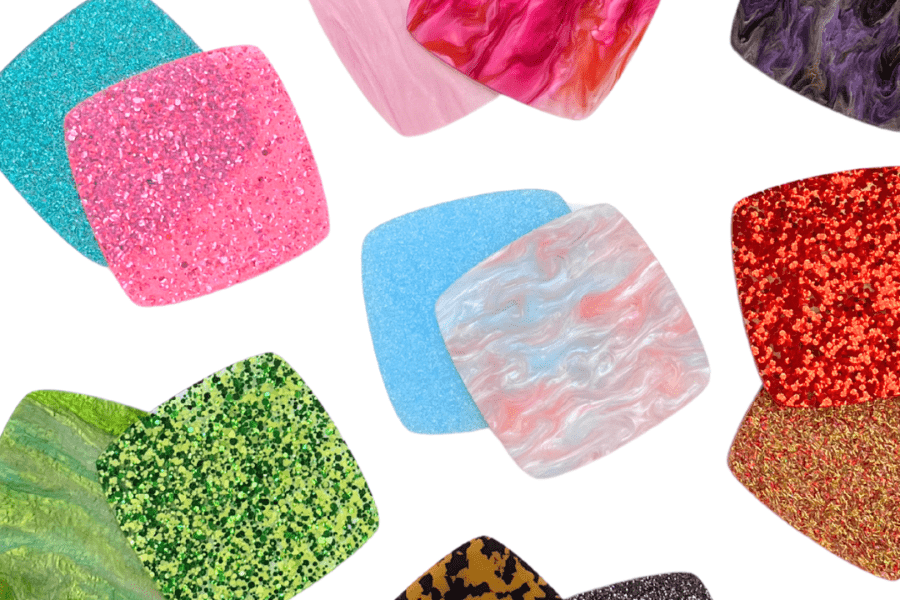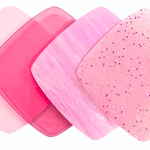
Why Choose Acrylic? A Comprehensive Look at Its Benefits and Alternatives
Acrylic is one of the most versatile and popular materials used in a wide range of applications. But with so many materials available, why should someone choose acrylic over alternatives like glass, polycarbonate, wood, or metal?
Let’s explore the unique advantages of acrylic and compare it to other commonly used materials.
Top Reasons to Choose Acrylic
- Clarity and Transparency
- Acrylic is renowned for its optical clarity, providing up to 92% light transmission, which is higher than glass. This makes it an excellent choice for applications where clarity and a glass-like appearance are important, such as display cases, aquariums, and picture frames.
- Why It’s Better: Unlike glass, acrylic does not have a green tint, allowing for a true, clear view.
- Lightweight Yet Strong
- Acrylic is much lighter than glass (about half the weight), making it easier to handle, transport, and install. Despite its lightness, acrylic is up to 17 times more impact-resistant than glass, reducing the risk of breakage.
- Why It’s Better: If safety and weight are concerns, acrylic is a safer, more durable alternative.
- Versatility in Fabrication
- Acrylic can be easily cut, shaped, and polished using laser cutters, saws, and routers. It’s also compatible with various adhesives and paints, making it a favorite for DIY projects and custom designs.
- Why It’s Better: Few materials offer the same ease of customization and versatility as acrylic.
- UV Resistance and Weather Durability
- Acrylic is naturally UV-resistant, making it an excellent choice for outdoor applications like signage.
- Why It’s Better: Its weather-resistant properties make it a long-lasting option for exterior use.
- Cost-Effective
- While acrylic may be more expensive than standard glass, it is often more affordable than high-grade glass or impact-resistant alternatives like polycarbonate. The durability and reduced maintenance costs make acrylic a cost-effective choice in the long run.
- Why It’s Better: It offers a great balance of affordability, quality, and durability.
- Environmentally Friendly
- Acrylic is recyclable, and many manufacturers offer eco-friendly versions made from recycled materials. It also requires less energy to produce compared to other plastics, making it a more sustainable choice.
- Why It’s Better: If sustainability is a priority, acrylic is a greener option compared to many other synthetic materials.
What Are the Alternatives to Acrylic?
While acrylic has many advantages, there are other materials to consider depending on the specific needs of a project. Here are some common alternatives and how they compare:
- Glass
- Pros: Excellent optical clarity, scratch-resistant, provides a premium feel.
- Cons: Heavier, more fragile, and can be dangerous if broken. Difficult to cut and shape.
- Polycarbonate
- Pros: Extremely strong and impact-resistant (up to 250 times stronger than glass), lightweight, and can withstand high temperatures.
- Cons: More expensive than acrylic, prone to scratches, and may yellow over time without UV protection.
- Wood
- Pros: Natural, aesthetically pleasing, and offers a unique texture.
- Cons: Heavier, prone to warping or rotting, requires more maintenance.
- Metal (Aluminum, Steel)
- Pros: Strong, durable, and resistant to extreme conditions. Offers a sleek, industrial look.
- Cons: Heavy, can be expensive, and may require specialized tools for cutting and shaping.
Acrylic stands out for its clarity, strength, versatility, and cost-effectiveness, making it a superior choice for a variety of applications. While alternatives like glass, polycarbonate, and wood have their own benefits, acrylic often offers the best combination of features. Whether you’re creating custom signs or laser-cut decorations, acrylic provides the durability and aesthetic appeal you need.
Ready to start your next project? Give acrylic a try and experience its advantages firsthand!
Prev post

All about Navidium Shipping & Handling | Filing a Claim for lost/damaged items
Updated on 06 December 2024
Next post

Shop the Look - Glitz
Updated on 11 November 2024







